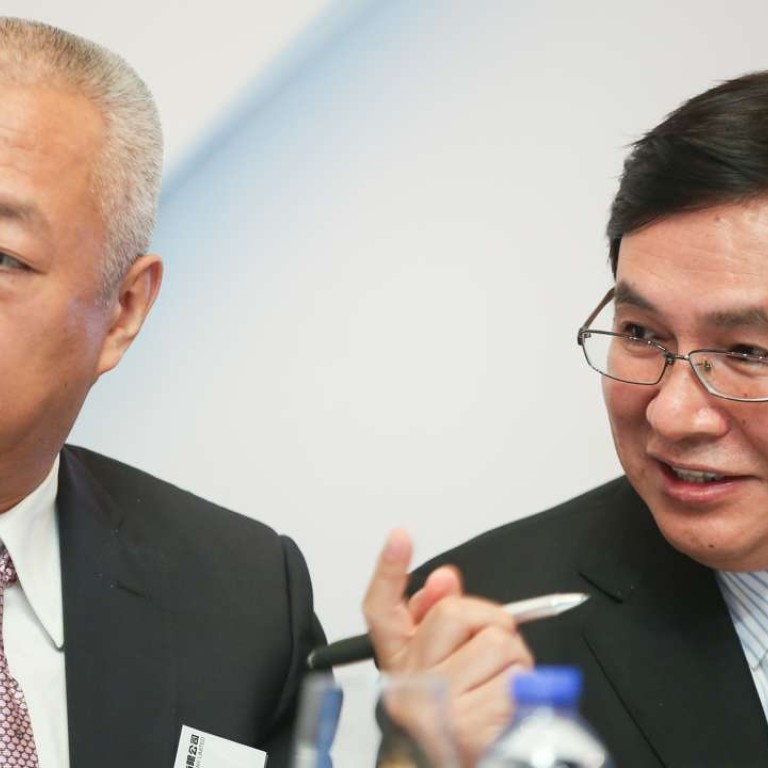
Shenhua Energy raises coal-fired power plant construction budget by 7.5 billion yuan
Vice-chairman of country’s largest coal miner insists it will only go ahead with projects that meet strict return-rate requirements
China Shenhua Energy, the listed flagship of the country’s largest coal miner Shenhua Group, has raised its budget for building coal-fired power plants this year, despite worsening industry overcapacity.
The move comes after being told by local governments that some of its projects will receive guaranteed power dispatch if they are completed by a certain deadline, after which they may have to rely on their own sales efforts to sell the output.
The policy highlights just how considerations between the central and local governments can diverge when it comes to power capacity management.
Asked on Monday if this would worsen the nation’s oversupply of generation capacity – something Beijing is trying to eradicate – and exacerbate a decline in plant utilisation which is at its lowest levels in three decades, the company’s vice-chairman Ling Wen said Shenhua would only push ahead with projects that reach their target expected return rates.
“We have re-examined our project pipeline according to their projected utilisation hours, coal costs, and power grid dispatch volumes,” he told reporters.
“We would only go ahead with projects that meet our internal return-rate requirements.”
On Friday China Shenhua posted a 19.3 per cent year-on-year decline in net profit for the first half, with operating profit from coal mining sinking 32.4 per cent.
The company mines and transports coal, generates power and produces downstream chemicals, and in March unveiled a total capital expenditure budget of 20 billion yuan for this year.
One of the nation’s largest power producers, it did not provide a breakdown of the budget at the time, contrary to the traditional practise of giving itself room to manoeuvre as policy and market conditions change.

But announcing its interim results on Friday, officials said that budget has now been raised to 27.5 billion yuan, of which 20.75 billion yuan was on power plants construction, 2.12 billion yuan will be on mine construction and revamp, 4.45 billion yuan on logistics facilities, and 180 million yuan on chemical plants.
Ling said the extra would mainly be spent on power plant construction, after a review of its entire project pipeline.
“We have suspended some projects, slowed the progress of others and pushed ahead with some,” he said.
“In deciding whether to go ahead with a project, we not only consider the project’s own return, but take into account a project’s profit contribution to our mining, rail and port operations.”
Nearly a quarter of the company’s coal output was fed into its own power plants last year, he said.
In deciding whether to go ahead with a project, we not only consider the project’s own return, but take into account a project’s profit contribution to our mining, rail and port operations
Chairman Zhang Yuzhuo added that Beijing is likely to continue its stringent shutting down of 500 million tonnes of outdated uncompetitive annual mining capacity, and curtail 500 million tonnes of output from other mines.
China was estimated to have 5.7 billion tonnes of annual coal mining capacity, compared to this year’s projected output of 3.5 billion tonnes.
The government ordered all mines to slash their annual operating days from 330 to no more than 276 from May 1, amounting to a 16 per cent reduction in capacity that resulted in a sharp price rebound.
The country had reached just 38 per cent of its annual capacity reduction target by the end of July, according to industry regulator National Development and Reform Commission.
The spot market price for benchmark high-grade coal mined in Shanxi province has surged from 350 yuan a tonne in November to more than 450 yuan this month, and may rise further due to strong summer demand and low inventory at ports and power plants, according to a BOC International report.
Zhang said further sharp rises are unlikely and prices are expected to be range-bound, since Beijing could adjust its policies to stem the rally.
China Shenhua on Friday said net profit fell to 10.83 billion yuan for the year’s first half year on year, matching its preliminary figures unveiled early this month.
First-half operating profit from coal mining sank 32.4 per cent year on year to 5.16 billion yuan, hurt by a 14.5 per cent fall in the average selling price to 271 yuan a tonne, which more than offset a 4.8 per cent rise in sales volume.
Operating profit from power generation also tumbled 21.9 per cent year on year to 8.17 billion yuan, on the back of a 10.5 per cent decline in the average power selling price and a 7.1 per cent fall in average plant utilisation to 2,051 hours. Output edged up 1.1 per cent year on year.
Lower utilisation is currently crimping the firm’s profit margins, since more fixed costs like maintenance and depreciation have to be borne by each unit of power sales.
Its railway division saw operating profit jump 45.4 per cent year on year to 7.66 billion yuan, thanks to the commissioning of new rail lines that boosted revenue by 21.5 per cent.
The port segment also saw operating profit grow 106 per cent year on year to 1.17 billion yuan due to higher throughput at its Huanghua port near Tianjin.
China Shenhua’s share price fell 0.73 per cent to HK$13.62 at the close on Monday, compared with a 0.38 per cent fall of the Hang Seng Index. They have gained 11.7 per cent year-to-date, outperforming the index’s 4.1 per cent rise.

